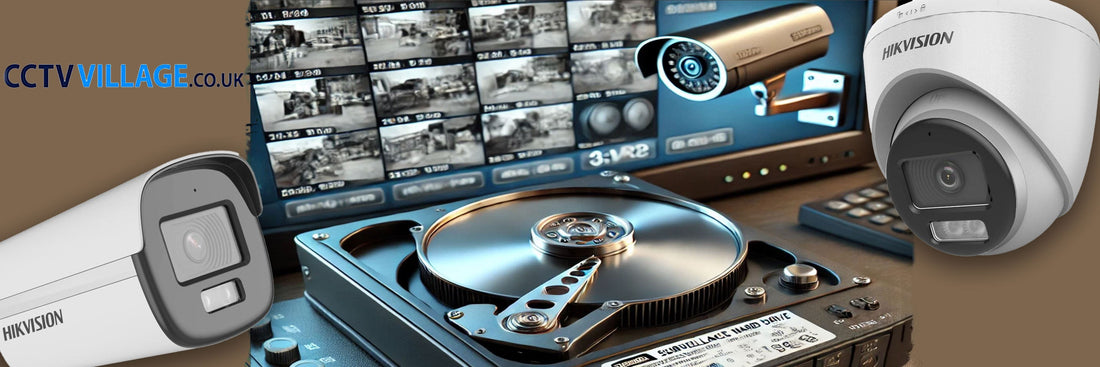In the realm of Closed Circuit Television (CCTV) surveillance systems, the storage medium plays a pivotal role in ensuring reliable and efficient recording of footage. Whether it's for commercial, residential, or industrial use, selecting the right hard drive is crucial for maintaining the integrity and accessibility of recorded data. Here, we delve into the essential criteria for choosing a hard drive tailored to CCTV recording needs.

1. Capacity:
A fundamental consideration is the storage capacity of the hard drive. The size should be ample enough to accommodate the volume of footage expected to be recorded over a defined period. High-resolution cameras and extended retention periods demand larger capacities to avoid the risk of overwriting crucial data.
2. Durability and Reliability:
CCTV systems often operate 24/7, subjecting the hard drive to constant read/write cycles. Opt for drives designed for surveillance applications, engineered to withstand the rigorous demands of continuous operation. Look for features such as enhanced durability, vibration resistance, and optimized firmware for surveillance workload.
3. Write Speed:
The ability to write data quickly is vital in CCTV recording, especially in scenarios where multiple cameras are capturing high-definition footage simultaneously. A hard drive with a high sustained write speed ensures seamless recording without dropouts or delays.
4. Read Speed:
While write speed is crucial during recording, read speed is equally essential during playback and data retrieval. A faster read speed facilitates swift access to archived footage, enabling efficient review and analysis when required.
5. Data Integrity and Error Handling:
Maintaining data integrity is paramount in surveillance applications where every frame could be critical. Look for drives equipped with error detection and correction mechanisms to mitigate the risk of data corruption. Features like vibration sensors and advanced error recovery technologies further enhance reliability.
6. Compatibility:
Ensure compatibility with your CCTV system by selecting hard drives that adhere to industry standards and protocols. Verify compatibility with the recording device and software to avoid compatibility issues that may compromise recording functionality.
7. Power Consumption:
CCTV systems often operate continuously, making power efficiency a significant concern. Opt for hard drives with low power consumption to minimize energy costs and heat generation, and also extend the lifespan of the drive.
8. Warranty and Support:
Choose hard drives from reputable manufacturers offering comprehensive warranties and reliable customer support. A longer warranty period provides added peace of mind, safeguarding your investment against premature failures or defects.
9. Scalability:
Consider the scalability of your surveillance system when selecting a hard drive. Choose drives that allow for easy expansion or integration into existing storage infrastructure as the need for additional storage capacity arises.
10. Security Features:
In sensitive environments, security features such as data encryption and secure erase functionalities are indispensable. Ensure that the hard drive supports encryption standards to protect recorded footage from unauthorized access or tampering.

Conclusion:
Selecting the right hard drive for CCTV surveillance entails a meticulous evaluation of various factors ranging from capacity and reliability to compatibility and security features. By prioritizing these criteria and opting for drives specifically designed for surveillance applications, you can ensure seamless and reliable recording of critical footage, safeguarding your premises and assets effectively. Invest wisely in a hard drive that meets the unique demands of your CCTV system, providing long-term stability and performance.

